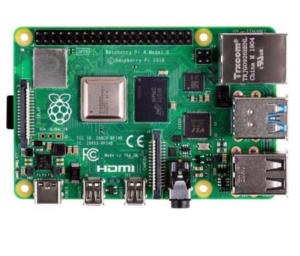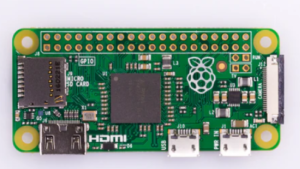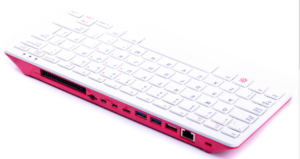Raspberry Pi
Introduction to Raspberry Pi
The Raspberry Pi is a series of small, affordable, and powerful single-board computers developed by the Raspberry Pi Foundation. Originally designed to promote computer science education in schools, the Raspberry Pi has evolved into a versatile tool used by hobbyists, educators, and professionals alike. It can be used for a wide range of projects, from simple programming exercises to complex IoT (Internet of Things) applications, robotics, and even as a desktop computer.
Types of Raspberry Pi Models:
- Pi Model A+: A compact, cost-effective option with fewer USB ports and no Ethernet port, ideal for space- and power-sensitive projects.
- Pi Model B: A versatile model featuring more USB ports and an Ethernet port, suitable for general computing and more demanding tasks.
- Pi Zero: This ultra-low-cost, tiny model has minimal connectivity, making it perfect for embedded and lightweight applications.
- Pi Zero W: An enhanced version of the Zero with added Wi-Fi and Bluetooth, ideal for wireless projects.
- Pi 3 Model B+: Offers a good balance of performance, connectivity, and cost, with enhanced processing power, Wi-Fi, and Bluetooth.
- Pi 4 Model B: The most powerful variant, providing multiple RAM options (2GB, 4GB, 8GB), USB 3.0 ports, dual 4K display outputs, and Gigabit Ethernet. Suitable for desktop replacement, media centers, and advanced IoT applications.
Detailed Features:
- Processor: Models range from the Broadcom BCM2835 ARM11 700MHz in the 1st generation to the BCM2711 ARM Cortex-A72 Quad-Core 1.5GHz in the latest version.
- Memory (RAM): Varies from 512MB in older models to up to 8GB in the latest version.
- Storage: All variants use a microSD card for storing the operating system and project files.
- Connectivity: The Zero models have minimal options, while the 3 and 4 models offer integrated Wi-Fi, Bluetooth, and Gigabit Ethernet.
- Ports: The number of USB ports differs across models, with the latest offering 2 USB 2.0 ports and 2 USB 3.0 ports. Video output includes HDMI support, with dual micro-HDMI ports available on the 4 Model B.
- GPIO Pins: A 40-pin GPIO header is present on all models, enabling connections to various external components.
Common Applications:
- Educational Tool: Used in schools for teaching coding, electronics, and basic computing, it’s a great platform for learning programming languages like Python and Scratch.
- DIY Projects: Popular for home automation, media centers, retro gaming consoles, and robotics, thanks to its versatile GPIO pins.
- Internet of Things (IoT): Its low power consumption and connectivity make it ideal for smart home devices, weather stations, and industrial automation.
- Server and Networking: Capable of running Linux-based operating systems for lightweight web servers, networked file storage (NAS), and VPN servers. The latest model is particularly suited for these purposes.
- Desktop Computer: The latest model can serve as a budget-friendly desktop computer for web browsing, document editing, and programming, with support for dual displays and multiple USB ports







